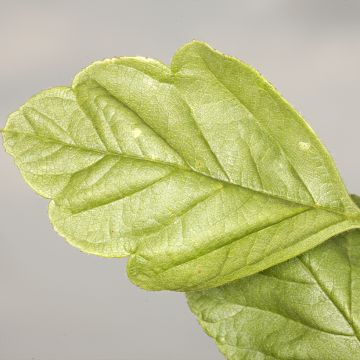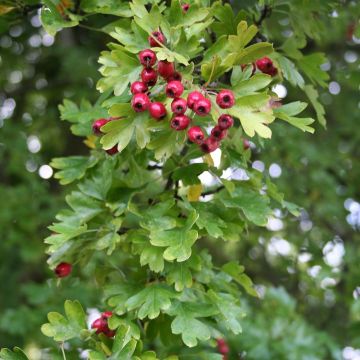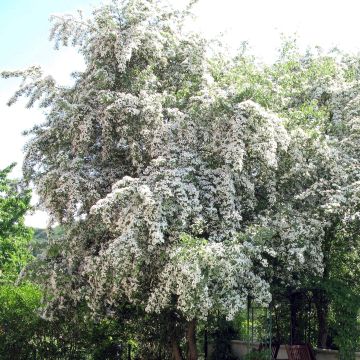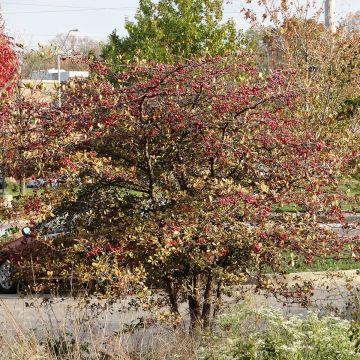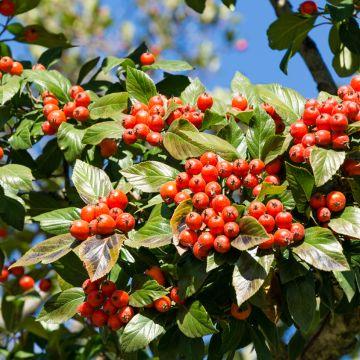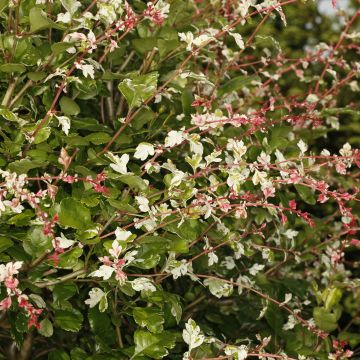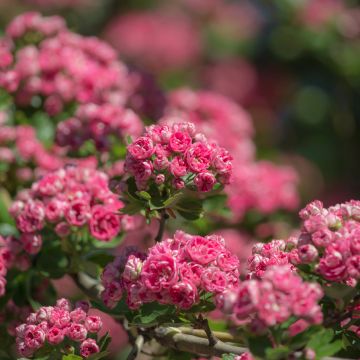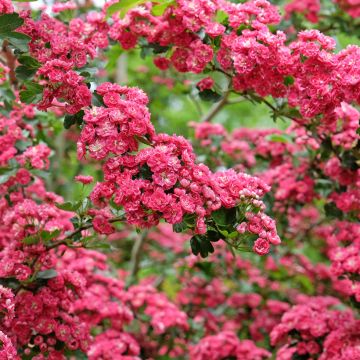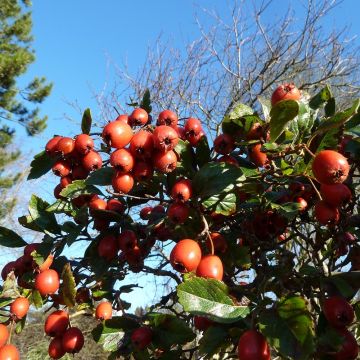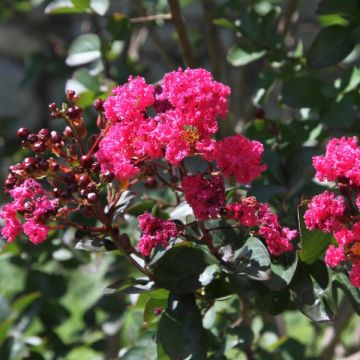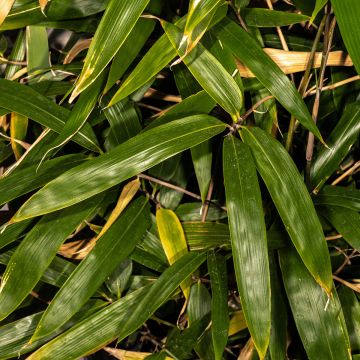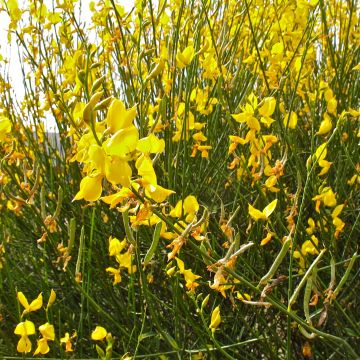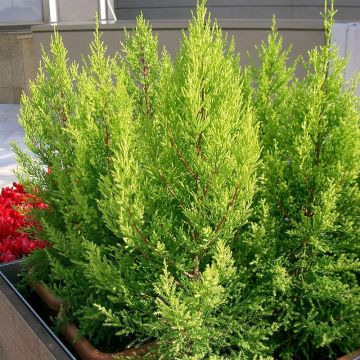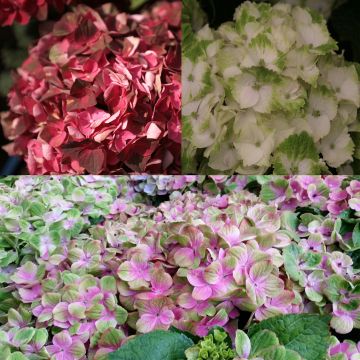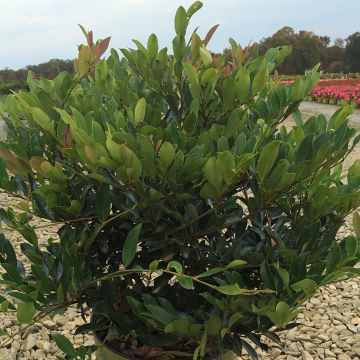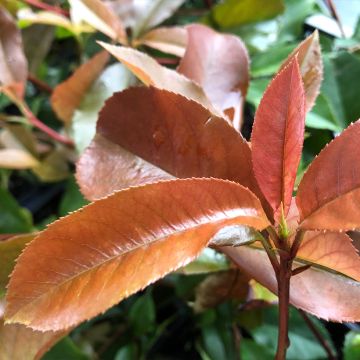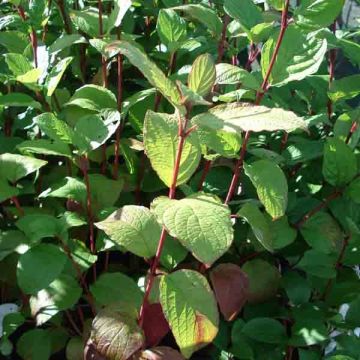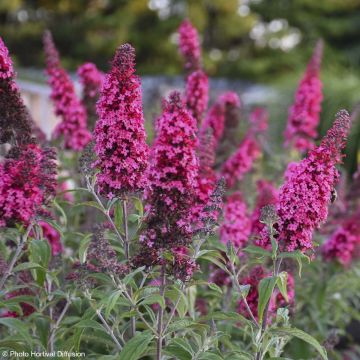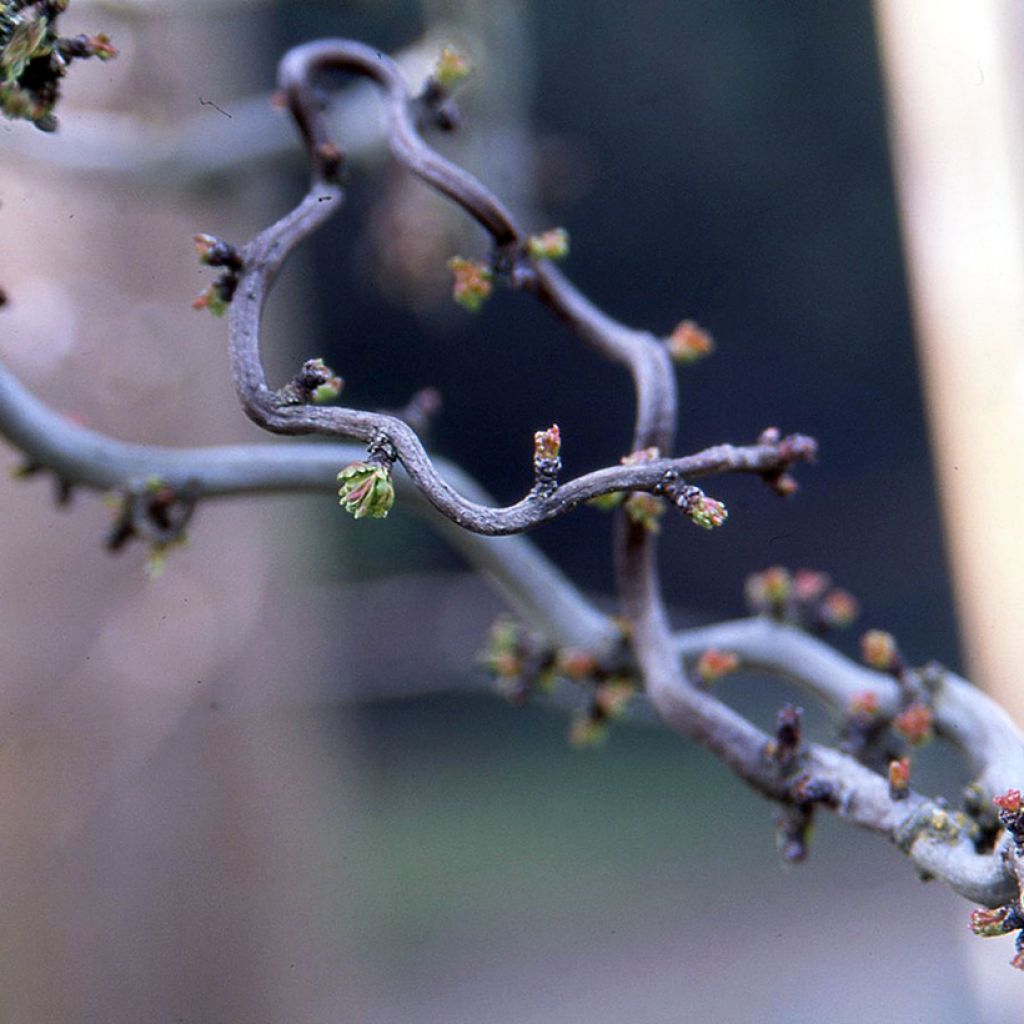

Crataegus monogyna Flexuosa
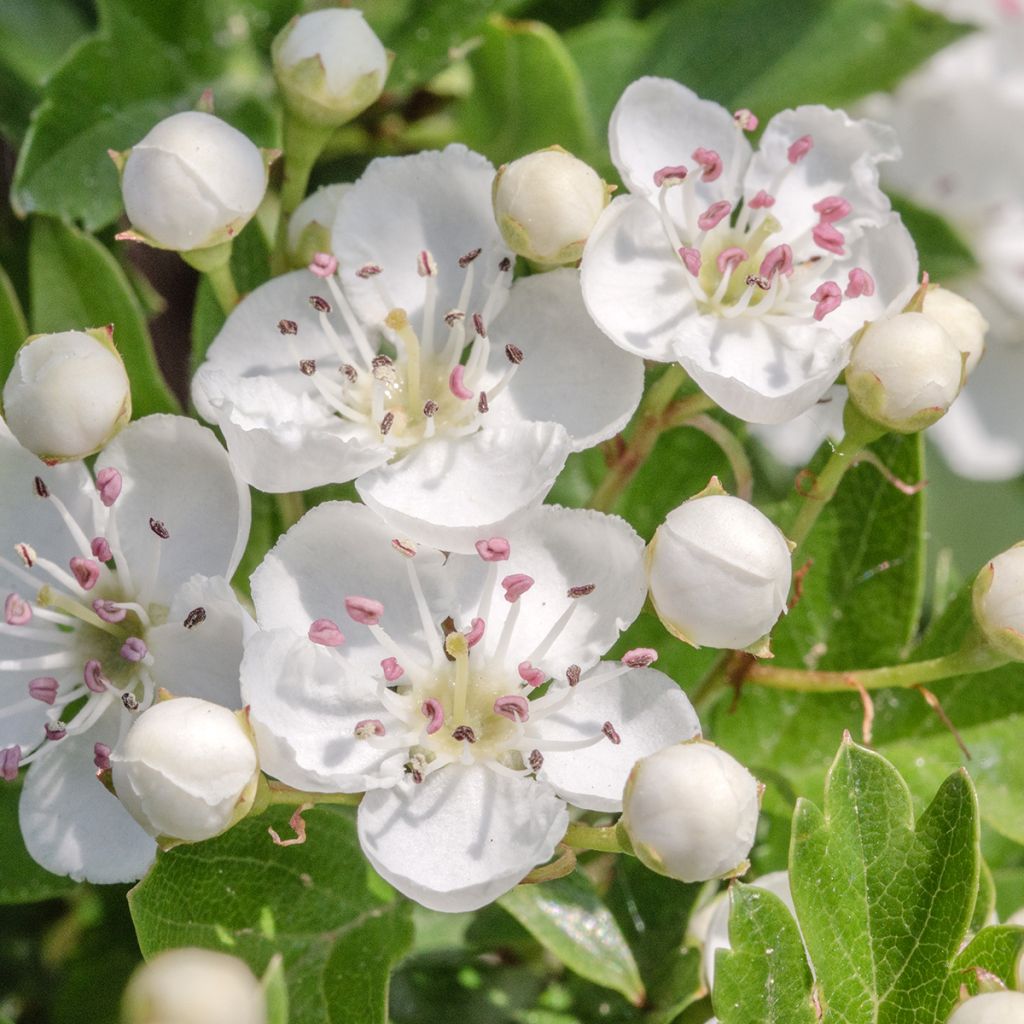

Crataegus monogyna Flexuosa
Crataegus monogyna Flexuosa
Crataegus monogyna Flexuosa
Common Hawthorn, Single-seeded Hawthorn, Mayblossom, Maythorn, Quickthorn, Whitethorn, Motherdie, Haw, Thornapple
This item cannot be shipped to the selected country
Delivery charge from €5.90
More information
Schedule delivery date,
and select date in basket
This plant carries a 24 months recovery warranty
More information
We guarantee the quality of our plants for a full growing cycle, and will replace at our expense any plant that fails to recover under normal climatic and planting conditions.
From €5.90 for pickup delivery and €6.90 for home delivery
Express home delivery from €8.90.
Does this plant fit my garden?
Set up your Plantfit profile →
Description
Crataegus monogyna 'Flexuosa' is a variety of White Hawthorn that is characterised by its small size and very twisted vegetation, composed of corkscrew branches adorned with strangely congested and frizzy leaves. Its habit itself seems constrained, giving this plant a special charm. Like the native species, the bush produces white flowers in May and red berries in autumn. A rare variety that will delight collectors and enthusiasts.
Crataegus monogyna, known as Single-style Hawthorn, One-style Hawthorn, or White Thorn, is a species native to central and southern Europe. In the wild, this small tree grows in deciduous or mixed forests, in open woods, on the edge, or even in open terrain (meadow). Ornamental and ecological, hawthorn is ideal in a hedgerow or natural hedge. It belongs to the large family of Rosaceae. It is a thorny shrub with a long lifespan, with very hard wood, reaching 10 m in height and 6 m in spread at maturity, with a bushy, dense, sometimes slightly untidy habit.
'Flexuosa' is a very rare cultivar of this native hawthorn discovered by Mr. Smith of Ayr Nurseries before 1839. It is a dwarf and twisted form, not to be confused with Crataegus monogyna var. tortuosa, which can reach 4 m high. 'Flexuosa' only grows 10 cm per year and reaches about 2 m high and 1 m in spread at the age of 25. The shrub has a very irregular upright habit, strongly twisted branches, and strangely incurved leaves. The trunk bark is grey-brown, becoming scaly over time, and its short stems bear thorns. Its foliage is deciduous, absent in winter. It consists of simple leaves, smaller than those of the species, deeply divided into 5 to 7 dentate lobes, slightly curled and twisted. The leaf veins are divergent. The leaves are dark green, with a duller underside, turning yellow in autumn before falling. In May-June, white, simple, fragrant flowers appear, grouped in dense, flat corymbs of 6 to 12. The flower corollas have 5 rounded petals and numerous stamens with light pink anthers that turn purple. The flowers measure 1 to 2 cm in diameter and are loved by bees. In September-October, numerous red fruits with a single stone called "haws" are observed, measuring 6 to 10 mm in length. These round berries are consumed by birds.
Crataegus monogyna 'Flexuosa' is a grafted plant that adapts to any well-drained soil, even limestone, in a sunny or semi-shaded position. With its very modest growth and fantastic silhouette, even in the heart of winter, it will be a welcome addition to a container, on a terrace, or prominently displayed in a small urban garden. To enhance it, you can plant Snow-in-Summer, small-flowered periwinkles, or 'Ophiopogon planiscapus Nigrescens with black foliage at its base. Fans of twisted small trees will also appreciate the contorted hazel Corylus avellana 'Contorta', the hybrid Peking willow Salix erythroflexuosa, Robinia pseudoacacia 'Twisty Baby', or the contorted lemon tree Poncirus trifoliata 'Flying Dragon'.
Nota: The White Thorn hybridises with Crataegus laevigata (Midland Hawthorn). It was formerly associated with May 1st. It was used as a calming agent to treat gout and pleurisy in the Middle Ages. Be careful of overdosing, which can cause cardiovascular problems. Its wood is used for heating and in small carpentry.
The term monogyna comes from the Latin "monogunus", which means "with a single style". This criterion distinguishes this variety from Crataegus laevigata, which has 2 or 3 styles (pistils) and therefore 2 or 3 stones in the fruit.
Report an error about the product description
Plant habit
Flowering
Foliage
Botanical data
Crataegus
monogyna
Flexuosa
Rosaceae
Common Hawthorn, Single-seeded Hawthorn, Mayblossom, Maythorn, Quickthorn, Whitethorn, Motherdie, Haw, Thornapple
Cultivar or hybrid
Other Hawthorn Crataegus
Planting and care
Crataegus monogyna Flexuosa is best grown in a sunny or semi-shaded location. Plant it in well-drained soil, even limestone and fairly dry in summer. This bush dislikes very clayey soils, waterlogged in winter, suffocating for the roots. Its cold resistance is excellent, well beyond -15 °C.
Hawthorn can be affected by caterpillars, aphids, rot, rust, and powdery mildew. It is particularly sensitive to fire blight, which can be an obstacle to planting it near apple and pear orchards. Crataegus monogynous is best planted in autumn in a sunny or semi-shaded position.
Planting period
Intended location
Care
This item has not been reviewed yet - be the first to leave a review about it.
Hedge shrubs
Haven't found what you were looking for?
Hardiness is the lowest winter temperature a plant can endure without suffering serious damage or even dying. However, hardiness is affected by location (a sheltered area, such as a patio), protection (winter cover) and soil type (hardiness is improved by well-drained soil).

Photo Sharing Terms & Conditions
In order to encourage gardeners to interact and share their experiences, Promesse de fleurs offers various media enabling content to be uploaded onto its Site - in particular via the ‘Photo sharing’ module.
The User agrees to refrain from:
- Posting any content that is illegal, prejudicial, insulting, racist, inciteful to hatred, revisionist, contrary to public decency, that infringes on privacy or on the privacy rights of third parties, in particular the publicity rights of persons and goods, intellectual property rights, or the right to privacy.
- Submitting content on behalf of a third party;
- Impersonate the identity of a third party and/or publish any personal information about a third party;
In general, the User undertakes to refrain from any unethical behaviour.
All Content (in particular text, comments, files, images, photos, videos, creative works, etc.), which may be subject to property or intellectual property rights, image or other private rights, shall remain the property of the User, subject to the limited rights granted by the terms of the licence granted by Promesse de fleurs as stated below. Users are at liberty to publish or not to publish such Content on the Site, notably via the ‘Photo Sharing’ facility, and accept that this Content shall be made public and freely accessible, notably on the Internet.
Users further acknowledge, undertake to have ,and guarantee that they hold all necessary rights and permissions to publish such material on the Site, in particular with regard to the legislation in force pertaining to any privacy, property, intellectual property, image, or contractual rights, or rights of any other nature. By publishing such Content on the Site, Users acknowledge accepting full liability as publishers of the Content within the meaning of the law, and grant Promesse de fleurs, free of charge, an inclusive, worldwide licence for the said Content for the entire duration of its publication, including all reproduction, representation, up/downloading, displaying, performing, transmission, and storage rights.
Users also grant permission for their name to be linked to the Content and accept that this link may not always be made available.
By engaging in posting material, Users consent to their Content becoming automatically accessible on the Internet, in particular on other sites and/or blogs and/or web pages of the Promesse de fleurs site, including in particular social pages and the Promesse de fleurs catalogue.
Users may secure the removal of entrusted content free of charge by issuing a simple request via our contact form.
The flowering period indicated on our website applies to countries and regions located in USDA zone 8 (France, the United Kingdom, Ireland, the Netherlands, etc.)
It will vary according to where you live:
- In zones 9 to 10 (Italy, Spain, Greece, etc.), flowering will occur about 2 to 4 weeks earlier.
- In zones 6 to 7 (Germany, Poland, Slovenia, and lower mountainous regions), flowering will be delayed by 2 to 3 weeks.
- In zone 5 (Central Europe, Scandinavia), blooming will be delayed by 3 to 5 weeks.
In temperate climates, pruning of spring-flowering shrubs (forsythia, spireas, etc.) should be done just after flowering.
Pruning of summer-flowering shrubs (Indian Lilac, Perovskia, etc.) can be done in winter or spring.
In cold regions as well as with frost-sensitive plants, avoid pruning too early when severe frosts may still occur.
The planting period indicated on our website applies to countries and regions located in USDA zone 8 (France, United Kingdom, Ireland, Netherlands).
It will vary according to where you live:
- In Mediterranean zones (Marseille, Madrid, Milan, etc.), autumn and winter are the best planting periods.
- In continental zones (Strasbourg, Munich, Vienna, etc.), delay planting by 2 to 3 weeks in spring and bring it forward by 2 to 4 weeks in autumn.
- In mountainous regions (the Alps, Pyrenees, Carpathians, etc.), it is best to plant in late spring (May-June) or late summer (August-September).
The harvesting period indicated on our website applies to countries and regions in USDA zone 8 (France, England, Ireland, the Netherlands).
In colder areas (Scandinavia, Poland, Austria...) fruit and vegetable harvests are likely to be delayed by 3-4 weeks.
In warmer areas (Italy, Spain, Greece, etc.), harvesting will probably take place earlier, depending on weather conditions.
The sowing periods indicated on our website apply to countries and regions within USDA Zone 8 (France, UK, Ireland, Netherlands).
In colder areas (Scandinavia, Poland, Austria...), delay any outdoor sowing by 3-4 weeks, or sow under glass.
In warmer climes (Italy, Spain, Greece, etc.), bring outdoor sowing forward by a few weeks.

































